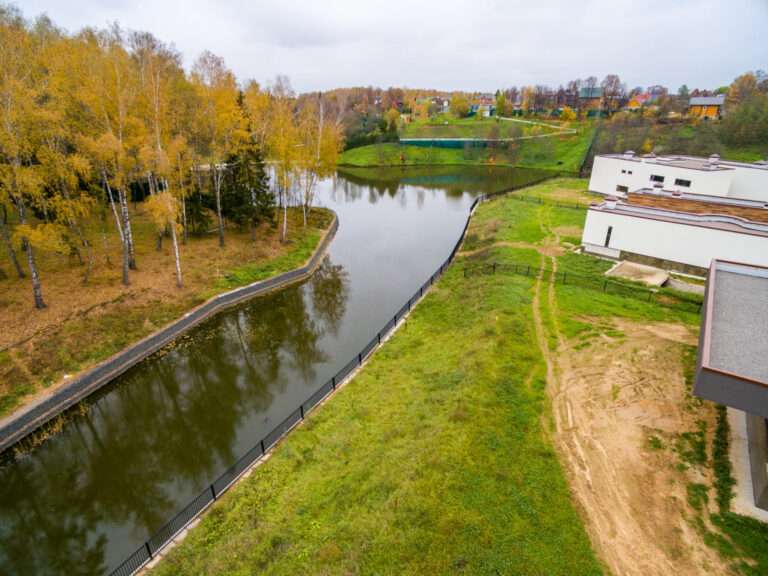The Hidden Power of Enhanced Soil: Why It Matters More Than You Think
Healthy soil is the foundation of thriving landscapes, whether for commercial developments, public parks, or private estates. In the UK, where climate and land conditions vary widely, soil enhancement is no longer a luxury—it’s a necessity. Improved soil quality leads to healthier plants, reduced maintenance costs, and long-term environmental benefits. But what exactly does “enhanced soil” mean, and why should businesses, developers, and land managers pay attention to it?
This blog explores the key benefits of enhanced soil, answers common questions, and demonstrates how investing in soil improvement can transform both landscapes and business outcomes.
What Does Enhanced Soil Mean?
Enhanced soil refers to soil that has been improved—either through organic matter, compost, conditioners, or professional treatments—to increase its fertility, structure, and resilience. It goes beyond basic soil management and focuses on creating an environment that maximises plant health, water retention, and biodiversity.
The Benefits of Enhanced Soil
1. Stronger Plant Growth 🌱
Enhanced soil provides plants with the nutrients they need to establish quickly and grow vigorously. A soil rich in organic matter allows roots to spread deeper and access water and nutrients more effectively. For businesses, this translates to landscapes that look greener, healthier, and more inviting.
2. Improved Water Management 💧
In the UK, heavy rainfall can cause soil compaction and flooding, while prolonged dry spells make water retention critical. Enhanced soil balances these extremes by improving drainage while retaining the right amount of moisture. This reduces the need for costly irrigation systems and prevents surface water problems.
3. Reduced Maintenance Costs ⚒️
Well-structured soil requires less fertiliser, fewer pesticides, and reduced watering. For facilities managers and local councils, this means long-term savings and fewer resource-intensive interventions. Landscapes stay healthier for longer, with less disruption and lower budgets.
4. Enhanced Biodiversity 🐝
Healthy soil creates a welcoming environment for beneficial organisms such as worms, pollinators, and microorganisms. This biodiversity boosts ecosystem resilience and supports wildlife. In the UK, biodiversity is increasingly a requirement in planning and development projects, making soil enhancement a compliance benefit as well as an ecological one.
5. Greater Sustainability 🌍
Sustainable landscapes are more than just a trend—they’re a responsibility. Enhanced soil reduces reliance on chemical inputs, cuts down on water waste, and increases carbon storage. For businesses, this enhances environmental credentials and strengthens sustainability reporting.
Frequently Asked Questions
Q: How do I know if my soil needs enhancing?
Signs include poor drainage, stunted plant growth, patchy grass, or soil that is either too sandy or too clay-heavy. A professional soil testing and enhancement service will give clear answers.
Q: What’s the difference between soil enhancement and fertilising?
Fertiliser is a short-term nutrient boost. Soil enhancement changes the soil’s structure and health for long-term improvement. Think of it as the difference between feeding a plant and improving the home it lives in.
Q: Is soil enhancement expensive?
While there is an upfront cost, it often reduces long-term maintenance spend, improves landscape resilience, and prevents costly plant failures. Many UK businesses view it as an investment rather than an expense.
Q: Can enhanced soil help with flood prevention?
Yes. By improving infiltration and reducing compaction, enhanced soil lowers surface runoff, which helps in flood-prone areas. This is especially important in urban landscapes.
Key Strategies for Soil Enhancement
| Strategy | Benefit |
|---|---|
| ♻️ Composting | Adds organic matter and improves soil fertility |
| 🌬️ Aeration | Prevents compaction and allows roots to breathe |
| 🍂 Mulching | Retains moisture and suppresses weeds |
| ⚖️ pH Balancing | Ensures nutrients are available for plant uptake |
| 🔍 Soil Testing | Identifies deficiencies and guides improvements |
| 🌾 Organic Amendments | Improves soil texture and long-term health |
Business Benefits of Investing in Enhanced Soil
- Professional image – Landscapes that are lush and well-maintained reflect positively on businesses, hotels, schools, and public spaces.
- Higher property value – Green spaces are proven to increase the value of commercial and residential developments.
- Compliance with planning requirements – Many UK developments require biodiversity net gain and sustainable drainage solutions (SuDS), both of which soil enhancement supports.
- Employee and community wellbeing – Healthier green spaces encourage use, improving wellbeing and satisfaction among staff and visitors.
Conclusion
Enhanced soil is not just about improving plants—it’s about creating landscapes that work harder for businesses, communities, and the environment. From reducing costs to boosting sustainability, the benefits are far-reaching. In a UK climate where resilience and biodiversity matter more than ever, soil enhancement is an investment that pays back year after year.
Killingley Insights is the editorial voice of NT Killingley Ltd, drawing on decades of experience in landscaping, environmental enhancements, and civil engineering projects across the UK.








